Editorial board
Editors of this journal work on a purely voluntary basis without remuneration in line with the not-for-profit philosophy of the EGU.
Co-editors-in-chief
Caroline Clason
Durham University
Department of Geography
Department of Geography
United Kingdom
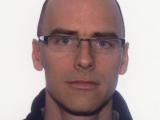
Chris Derksen
Environment and Climate Change Canada
Climate Research Division
Climate Research Division
Canada
Subject areas
Subject areas
Frozen ground
Glaciers
Ice sheets
Other
Sea ice
Snow
Glaciers
Ice sheets
Other
Sea ice
Snow

Christian Haas
Alfred Wegener Institute
Sea Ice
Sea Ice
Germany
Subject areas
Subject areas
Frozen ground
Glaciers
Ice sheets
Other
Sea ice
Snow
Glaciers
Ice sheets
Other
Sea ice
Snow
Christian Hauck
University of Fribourg
Department of Geosciences
Department of Geosciences
Switzerland
Subject areas
Subject areas
Frozen ground
Other
Other
Nanna Bjørnholt Karlsson
Geological Survey of Denmark and Greenland
Glaciology and Climate
Glaciology and Climate
Denmark
Subject areas
Subject areas
Glaciers
Ice sheets
Other
Snow
Ice sheets
Other
Snow

Hanna Lee
Norwegian University of Science and Technology
Department of Biology
Department of Biology
Norway
Subject areas
Subject areas
Frozen ground

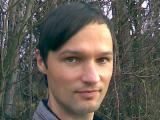
Thomas Mölg
University of Erlangen-Nürnberg (FAU)
Institute of Geography
Institute of Geography
Germany
Subject areas
Subject areas
Glaciers
Other
Other

Advisory editor
Olaf Eisen
AWI
Glaciology
Glaciology
Germany
Editors
Yevgeny Aksenov
National Oceanography Centre
Ocean Modelling
Ocean Modelling
United Kingdom
Subject areas
Subject areas
Sea ice
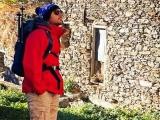
Francesco Avanzi
CIMA Research Foundation
NA
NA
Italy
Subject areas
Subject areas
Glaciers
Other
Snow
Other
Snow

David Babb
University of Manitoba
Centre for Earth Observation Science
Environment and Geography
Centre for Earth Observation Science
Environment and Geography
Canada
Subject areas
Subject areas
Sea ice
Elizabeth Bagshaw
University of Bristol
Geographical Sciences
Geographical Sciences
United Kingdom
Subject areas
Subject areas
Glaciers
Ice sheets
Ice sheets
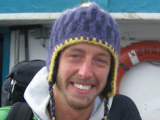
Nicholas Barrand
University of Birmingham
School of Geography, Earth and Environmental Sciences
School of Geography, Earth and Environmental Sciences
United Kingdom
Subject areas
Subject areas
Glaciers
Ice sheets
Ice sheets

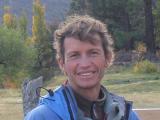
Etienne Berthier
LEGOS (CNES/CNRS/IRD/UT3)
France
Subject areas
Subject areas
Glaciers
Ice sheets
Ice sheets


Ed Blockley
Met Office
Oceans and Cryosphere
Oceans and Cryosphere
United Kingdom
Subject areas
Subject areas
Sea ice


Tobias Bolch
Graz University of Technology
Institute of Geodesy
Institute of Geodesy
Austria
Subject areas
Subject areas
Frozen ground
Glaciers
Ice sheets
Other
Sea ice
Snow
Glaciers
Ice sheets
Other
Sea ice
Snow

Adam Booth
University of Leeds
Applied Geosciences
School of Earth, Environment and Sustainability
Applied Geosciences
School of Earth, Environment and Sustainability
United Kingdom
Subject areas
Subject areas
Frozen ground
Glaciers
Ice sheets
Glaciers
Ice sheets
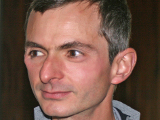
Guillaume Chambon
INRAE
UR ETNA, Snow avalanche and torrent control research unit
UR ETNA, Snow avalanche and torrent control research unit
France
Subject areas
Subject areas
Snow

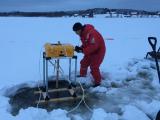
Bin Cheng
Finnish Meteorological Institute
Meteorological and Marine Research Programme
Meteorological and Marine Research Programme
Finland
Subject areas
Subject areas
Sea ice

Gong Cheng
Dartmouth College
Department of Earth Sciences
Department of Earth Sciences
United States
Subject areas
Subject areas
Glaciers
Ice sheets
Ice sheets
Caroline Clason
Durham University
Department of Geography
Department of Geography
United Kingdom
Subject areas
Subject areas
Glaciers
Ice sheets
Ice sheets
Florence Colleoni
National Institute of Oceanography and Applied Geophysics (OGS)
GEO
GEO
Italy
Subject areas
Subject areas
Ice sheets
Sea ice
Sea ice
Emily Collier
University of Innsbruck
Department of Atmospheric and Cryospheric Sciences
Department of Atmospheric and Cryospheric Sciences
Austria
Subject areas
Subject areas
Glaciers
Anna Crawford
University of Stirling
Biological and Environmental Sciences
Biological and Environmental Sciences
United Kingdom
Subject areas
Subject areas
Glaciers
Ian Delaney
Université de Lausanne
IDYST
Faculty of Geosciences and the Environment
IDYST
Faculty of Geosciences and the Environment
Switzerland
Subject areas
Subject areas
Glaciers

Chris Derksen
Environment and Climate Change Canada
Climate Research Division
Climate Research Division
Canada
Subject areas
Subject areas
Frozen ground
Glaciers
Ice sheets
Other
Sea ice
Snow
Glaciers
Ice sheets
Other
Sea ice
Snow

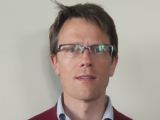
Jan De Rydt
Northumbria University
Geography and Environmental Sciences
Geography and Environmental Sciences
United Kingdom
Subject areas
Subject areas
Ice sheets

Philipp de Vrese
Max Planck Institute for Meteorology
Land in the earth system
Land in the earth system
Germany
Subject areas
Subject areas
Frozen ground

Reinhard Drews
Tübingen University
Department of Geosciences
Department of Geosciences
Germany
Subject areas
Subject areas
Glaciers
Ice sheets
Ice sheets

Marie Dumont
CNRM, Meteo-France -CNRS, UMR3589
CEN
CEN
France
Subject areas
Subject areas
Frozen ground
Glaciers
Ice sheets
Other
Sea ice
Snow
Glaciers
Ice sheets
Other
Sea ice
Snow
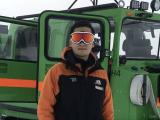
Sheng Fan
Center for High Pressure Science & Technology Advanced Research (HPSTAR)
China
Subject areas
Subject areas
Glaciers
Ice sheets
Other
Ice sheets
Other

Daniel Farinotti
ETH Zurich
Laboratory of Hydraulics, Hydrology and Glaciology (VAW)
D-BAUG
Laboratory of Hydraulics, Hydrology and Glaciology (VAW)
D-BAUG
Switzerland
Subject areas
Subject areas
Glaciers
Daniel Feltham
University of Reading, Whiteknights
Finance
Finance
United Kingdom
Subject areas
Subject areas
Ice sheets
Other
Sea ice
Other
Sea ice
Xavier Fettweis
University of Liège
Laboratory of Climatology
Department de Geography
Laboratory of Climatology
Department de Geography
Belgium
Subject areas
Subject areas
Frozen ground
Glaciers
Ice sheets
Other
Sea ice
Snow
Glaciers
Ice sheets
Other
Sea ice
Snow
Adrian Flores Orozco
TU Wien
Research Unit of Geophysics
Geodesy and Geoinformation
Research Unit of Geophysics
Geodesy and Geoinformation
Austria
Subject areas
Subject areas
Frozen ground
Glaciers
Glaciers
Regula Frauenfelder
Norwegian Geotechnical Institute
Norway
Subject areas
Subject areas
Frozen ground
T.J. Fudge
University of Washington
Earth and Space Sciences
Earth and Space Sciences
United States
Subject areas
Subject areas
Glaciers
Ice sheets
Other
Snow
Ice sheets
Other
Snow
Johannes J. Fürst
FAU Erlangen-Nürnberg
Institute of Geography
Department of Geography and Geosciences
Institute of Geography
Department of Geography and Geosciences
Germany
Subject areas
Subject areas
Ice sheets
Sea ice
Sea ice

Lei Geng
University of Science & Technology of China
School of Earth and Space Sciences
Geochemistry
School of Earth and Space Sciences
Geochemistry
China
Subject areas
Subject areas
Ice sheets
Other
Snow
Other
Snow

Sebastian Gerland
Norwegian Polar Institute
Norway
Subject areas
Subject areas
Sea ice
Jari Haapala
Finnish Meteorological Institute
Marine Research
Marine Research
Finland
Subject areas
Subject areas
Sea ice
Christian Haas
Alfred Wegener Institute
Sea Ice
Sea Ice
Germany
Subject areas
Subject areas
Other
Sea ice
Sea ice
Christian Hauck
University of Fribourg
Department of Geosciences
Department of Geosciences
Switzerland
Subject areas
Subject areas
Frozen ground
Other
Other

Petra Heil
Australian Antarctic Division & University of Tasmania & Swiss Federal Institute for Forest, Snow and Landscape Research
Australian Antarctic Programme Partnership & Snow and Avalanche Research Institute
Australian Antarctic Programme Partnership & Snow and Avalanche Research Institute
Australia
Subject areas
Subject areas
Sea ice
Snow
Snow

Nora Helbig
WSL Institute for Snow and Avalanche Research SLF
Eastern Switzerland University of Applied Sciences
Eastern Switzerland University of Applied Sciences
Switzerland
Subject areas
Subject areas
Snow
Stephen Howell
Environment and Climate Change Canada
Climate Research Division
Climate Research Division
Canada
Subject areas
Subject areas
Sea ice

Nils Hutter
GEOMAR Helmholtz Centre for Ocean Research Kiel
Ocean Dynamics
Ocean Dynamics
Germany
Subject areas
Subject areas
Sea ice

Lars Kaleschke
Alfred Wegener Institute for Polar and Marine Research (AWI)
Germany
Subject areas
Subject areas
Frozen ground
Glaciers
Ice sheets
Other
Sea ice
Snow
Glaciers
Ice sheets
Other
Sea ice
Snow
Nanna Bjørnholt Karlsson
Geological Survey of Denmark and Greenland
Glaciology and Climate
Glaciology and Climate
Denmark
Subject areas
Subject areas
Glaciers
Ice sheets
Other
Snow
Ice sheets
Other
Snow
Kaitlin Keegan
University of Nevada, Reno
United States
Subject areas
Subject areas
Ice sheets
Other
Snow
Other
Snow
Homa Kheyrollah Pour
Wilfrid Laurier University
Cold Regions Research Centre
Department of Geography and Environmental Studies
Cold Regions Research Centre
Department of Geography and Environmental Studies
Canada
Subject areas
Subject areas
Other
Snow
Snow
Franziska Koch
BOKU University, Vienna
Institute of Hydrology and Water Management (HyWa)
Department of Landscape, Water and Infrastructure
Institute of Hydrology and Water Management (HyWa)
Department of Landscape, Water and Infrastructure
Austria
Subject areas
Subject areas
Other
Snow
Snow
Krystyna Kozioł
Kazimierz Wielki University in Bydgoszcz
Faculty of Geographical Sciences
Department of Environmental Change and Geochemistry
Faculty of Geographical Sciences
Department of Environmental Change and Geochemistry
Poland
Subject areas
Subject areas
Frozen ground
Glaciers
Snow
Glaciers
Snow
Alexandre Langlois
Université de Sherbrooke
Géomatique Appliquée
Géomatique Appliquée
Canada
Subject areas
Subject areas
Other
Sea ice
Snow
Sea ice
Snow

Hanna Lee
Norwegian University of Science and Technology
Department of Biology
Department of Biology
Norway
Subject areas
Subject areas
Frozen ground


Stef Lhermitte
KU Leuven
Department of Earth & Environmental Sciences
Department of Earth & Environmental Sciences
Belgium
Subject areas
Subject areas
Glaciers
Ice sheets
Snow
Ice sheets
Snow

Stephen Livingstone
University of Sheffield
Department of Geography
Department of Geography
United Kingdom
Subject areas
Subject areas
Glaciers
Ice sheets
Ice sheets
Joseph MacGregor
NASA Goddard Space Flight Center
Cryospheric Sciences Laboratory (Code 615)
Cryospheric Sciences Laboratory (Code 615)
United States
Subject areas
Subject areas
Ice sheets
Other
Other
Horst Machguth
University of Fribourg
Department of Geosciences
Cryospheric Research Group
Department of Geosciences
Cryospheric Research Group
Switzerland
Subject areas
Subject areas
Glaciers
Ice sheets
Ice sheets
Ted Maksym
Woods Hole Oceanographic Institution
Applied Ocean Physics & Engineering
Applied Ocean Physics & Engineering
United States
Subject areas
Subject areas
Sea ice
Elisa Mantelli
Princeton University
Atmospheric and Oceanic Sciences Program
Atmospheric and Oceanic Sciences Program
Germany
Subject areas
Subject areas
Glaciers
Ice sheets
Other
Ice sheets
Other
Philip Marsh
Wilfrid Laurier University
Cold Regions Research Centre
Dept. of Geography and Environmental Studies
Cold Regions Research Centre
Dept. of Geography and Environmental Studies
Canada
Subject areas
Subject areas
Frozen ground
Other
Snow
Other
Snow
Carlos Martin
British Antarctic Survey
Ice Dynamics and Palaeoclimate
Ice Dynamics and Palaeoclimate
United Kingdom
Subject areas
Subject areas
Glaciers
Ice sheets
Snow
Ice sheets
Snow
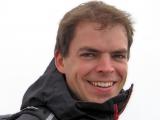
Ben Marzeion
University of Bremen
Institute of Geography
Institute of Geography
Germany
Subject areas
Subject areas
Glaciers


Felicity McCormack
Monash University
School of Earth, Atmosphere & Environment
Faculty of Science
School of Earth, Atmosphere & Environment
Faculty of Science
Australia
Subject areas
Subject areas
Glaciers
Ice sheets
Ice sheets

K. M. Meiners
Australian Antarctic Division
Cécile Ménard
University of Edinburgh
Global Change Institute
School of Geosciences
Global Change Institute
School of Geosciences
United Kingdom
Subject areas
Subject areas
Snow
Anne Morgenstern
Alfred Wegener Institute Helmholtz Centre for Polar and Marine Research
Permafrost Research
Permafrost Research
Germany
Subject areas
Subject areas
Frozen ground
Ruth Mottram
National Centre for Climate Research
National Centre for Climate Research
National Centre for Climate Research
Denmark
Subject areas
Subject areas
Ice sheets
Snow
Snow
Vishnu Nandan
University of Calgary
Cryosphere Climate Research Group
Geography
Cryosphere Climate Research Group
Geography
Canada
Subject areas
Subject areas
Sea ice
Snow
Snow
Kerim Nisancioglu
University of Bergen
Bjerknessenteret
Department of Earth Sciences
Bjerknessenteret
Department of Earth Sciences
Norway
Subject areas
Subject areas
Ice sheets
Sea ice
Sea ice
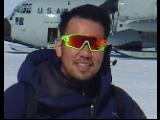
Masashi Niwano
Meteorological Research Institute
Physical Meteorology Research Department
Physical Meteorology Research Department
Japan
Subject areas
Subject areas
Ice sheets
Snow
Snow


Brice Noël
University of Liège
Laboratoire de Climatologie et Topoclimatologie
Geography
Laboratoire de Climatologie et Topoclimatologie
Geography
Belgium
Subject areas
Subject areas
Glaciers
Ice sheets
Snow
Ice sheets
Snow

Jeannette Noetzli
WSL Institute for Snow and Avalanche Research SLF
Natural Hazards and Alpine Environment
Natural Hazards and Alpine Environment
Switzerland
Subject areas
Subject areas
Frozen ground
Snow
Snow
Andrew Orr
British Antarctic Survey
United Kingdom
Kristin Poinar
University at Buffalo
RENEW Institute
Department of Earth Sciences
RENEW Institute
Department of Earth Sciences
United States
Subject areas
Subject areas
Glaciers
Ice sheets
Ice sheets
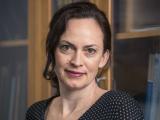
Rebecca Priestley
Victoria University of Wellington
Faculty of Science
Science in Society
Faculty of Science
Science in Society
New Zealand
Subject areas
Subject areas
Other

Valentina Radic
University of British Columbia
Earth Ocean and Atmospheric Sciences
Earth Ocean and Atmospheric Sciences
Earth Ocean and Atmospheric Sciences
Earth Ocean and Atmospheric Sciences
Canada
Subject areas
Subject areas
Frozen ground
Glaciers
Ice sheets
Other
Sea ice
Snow
Glaciers
Ice sheets
Other
Sea ice
Snow

Heather Reese
Univ. of Gothenburg
Dept. of Earth Sciences
Dept. of Earth Sciences
Sweden
Subject areas
Subject areas
Frozen ground

Alexander Robinson
Alfred Wegener Institute, Helmholtz Centre for Polar and Marine Research
Germany
Subject areas
Subject areas
Ice sheets
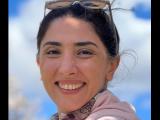
Mahya Roustaei
Ghent University
UGGI
Civil
UGGI
Civil
Belgium
Subject areas
Subject areas
Frozen ground

Louise Sandberg Sørensen
DTU Space
National Space Institute
GEO
National Space Institute
GEO
Denmark
Subject areas
Subject areas
Glaciers
Ice sheets
Ice sheets
Melody Sandells
Northumbria University
United Kingdom
Subject areas
Subject areas
Snow
David Schroeder
University of Reading
Centre for Polar Observation and Modelling
Department of Meteorology
Centre for Polar Observation and Modelling
Department of Meteorology
United Kingdom
Subject areas
Subject areas
Sea ice
Jürg Schweizer
Eidgenössische Forschungsanstalt WSL
WSL Institute for Snow and Avalanche Research SLF
WSL Institute for Snow and Avalanche Research SLF
Switzerland
Subject areas
Subject areas
Snow
S. McKenzie Skiles
University of Utah
Snow HydRO Lab
Geography
Snow HydRO Lab
Geography
United States
Subject areas
Subject areas
Glaciers
Other
Snow
Other
Snow
Benjamin Smith
University of Washington
APL Polar Science Center
APL Polar Science Center
United States
Subject areas
Subject areas
Frozen ground
Glaciers
Ice sheets
Other
Sea ice
Snow
Glaciers
Ice sheets
Other
Sea ice
Snow
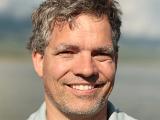
Arjen Stroeven
Stockholm University
Department of Physical Geography
Department of Physical Geography
Sweden
Subject areas
Subject areas
Frozen ground
Glaciers
Ice sheets
Other
Sea ice
Snow
Glaciers
Ice sheets
Other
Sea ice
Snow

Sainan Sun
Northumbria University
Geography and Environmental Science
Geography and Environmental Science
United Kingdom
Subject areas
Subject areas
Ice sheets
Johannes Sutter
University of Bern
Physics Institute
Climate and Environmental Physics
Physics Institute
Climate and Environmental Physics
Switzerland
Subject areas
Subject areas
Glaciers
Ice sheets
Ice sheets

Michel Tsamados
University College London
Center for Polar Obsevation and Modelling
Earth Sciences
Center for Polar Obsevation and Modelling
Earth Sciences
United Kingdom
Subject areas
Subject areas
Frozen ground
Ice sheets
Other
Sea ice
Snow
Ice sheets
Other
Sea ice
Snow

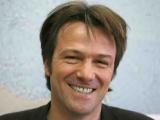
Michiel van den Broeke
Utrecht University
IMAU
IMAU
Netherlands
Subject areas
Subject areas
Frozen ground
Glaciers
Ice sheets
Other
Sea ice
Snow
Glaciers
Ice sheets
Other
Sea ice
Snow

Wesley Van Wychen
University of Waterloo
Faculty of Environment
Geography and Environmental Management
Faculty of Environment
Geography and Environmental Management
Canada
Subject areas
Subject areas
Glaciers
Ice sheets
Sea ice
Ice sheets
Sea ice
Carrie Vuyovich
NASA
Sciences and Exploration Directorate
Sciences and Exploration Directorate
United States
Subject areas
Subject areas
Snow
Bert Wouters
TU Delft
Department of Geoscience and Remote Sensing
Department of Geoscience and Remote Sensing
Netherlands
Subject areas
Subject areas
Frozen ground
Glaciers
Ice sheets
Other
Sea ice
Snow
Glaciers
Ice sheets
Other
Sea ice
Snow

John Yackel
University of Calgary
Geography
Geography
Canada
Subject areas
Subject areas
Ice sheets
Other
Sea ice
Other
Sea ice


Kang Yang
Nanjing University
School of Geography and Ocean Science
School of Geography and Ocean Science
China
Subject areas
Subject areas
Glaciers

Editors on leave
Josefin Ahlkrona
Stockholm University
Department of Mathematics
Department of Mathematics
Sweden
Nicolas Jourdain
CNRS
Institut des Geosciences de l'Environnement (IGE)
Institut des Geosciences de l'Environnement (IGE)
France
Martin Schneebeli
WSL Institute for Snow and Avalanche Research SLF
Switzerland
